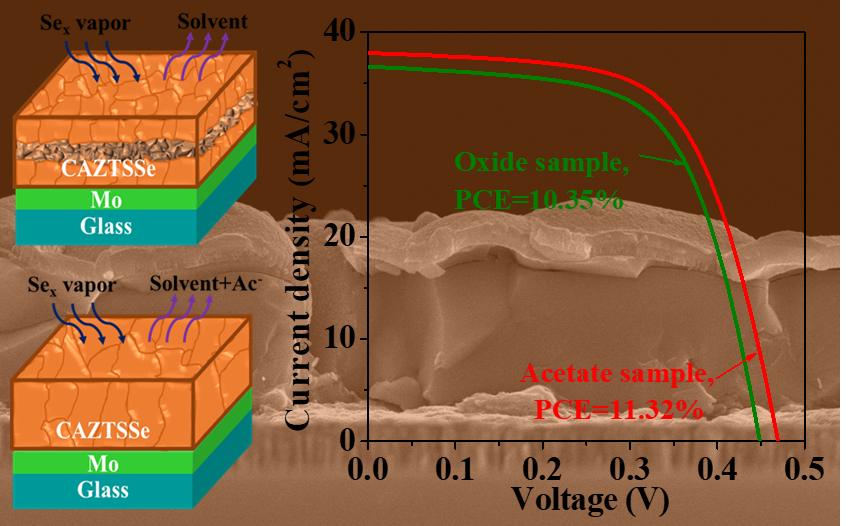Recently, Prof. Wu Sixin’s group have published their research article “Enhancing Grain Growth for Efficient Solution-Processed (Cu,Ag)2ZnSn(S,Se)4 Solar Cells Based on Acetate Precursor” in ACS Applied Materials & Interfaces. (ACS Applied Materials & Interfaces, 2020, 12, 14213−14223. IF: 8.456, JCR-1).
Article link:
https://pubs.acs.org/doi/abs/10.1021/acsami.0c02629

Crystallinity is the overriding factor in the determination of the photoelectric properties of absorber materials and the overall performance of the photovoltaic device. Nevertheless, in the Cu2ZnSn(S,Se)4 (CZTSSe) photovoltaic device, the bilayer or trilayer structure for the absorber has been broadly observed, which is generally harmful to the cell performance because the probability of photogenerated carrier recombination at grain boundaries significantly increased. This work applicated research of anions to (Cu,Ag)2ZnSn(S,Se)4 (CAZTSSe) materials for the first time. Acetate salt was used as starting material instead of oxide. Benefiting from the volatility of acetate ions, the crystallization of the CAZTSSe absorber film has been considerably enhanced. Large grains were observed going cross the entire absorber layer. The results show that the enhancement of crystallinity of the absorber film effectively inhibits the recombination of photogenerated carriers at the grain boundary and reduces the concentration of CuZn antisite defects in the absorption layer. Finally, the photoelectric conversion efficiency of CAZTSSe solar cells increased from 10.35% (oxide route) to 11.32% (acetate route). The research results reveal the key role of anions in the crystallinity of the absorption layer of CZTSSe solar cells by solution method, which has important guiding significance for the research and application of CZTSSe photovoltaic devices.